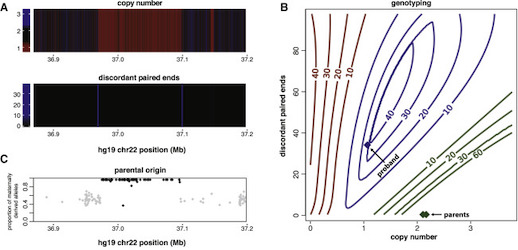
Genetics of Brain Development and Behavior
How can DNA build a brain? And can we decode the molecular message? These are questions that fascinate me and serve as the foundation for my scientific curiosity. We can decipher the genetic blueprint of our mind by studying genetic conditions that affect behavior, such as psychiatric disorders.
Autism is a behavioral disorder of social deficit that affects 1% of Americans. De novo mutations, those that are found in children but not in parents, underlie nearly 30% of Autism cases. Studying de novo mutations holds the promise to better understand brain development and the genetics of human behavior. Most importantly, identifying critical genes provide new leads in therapeutics and prevention.
My research trajectory is to better understand the genetics of psychiatric disorders through genome sequencing, with the goal to provide a clearer understanding of the genetics of brain development and to lay the groundwork for therapeutics and preventative measures.
